I. Background
Tropical regions used to face challenges in animal husbandry, such as protein deficiency, difficulty in haymaking, and winter fodder shortages. As shorter days and colder temperatures in winter slow down grass growth, livestock raisers had to buy feed from other areas, resulting in increased feed costs, as well as higher prices for goat and cattle.
Having advantages of low crude protein content and lower prices, cassava and its byproducts could be taken as a new feed choice for ruminant production.
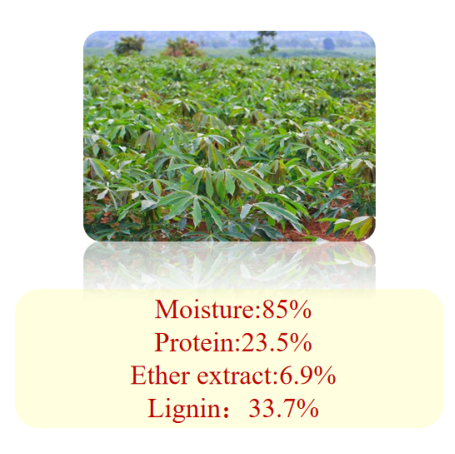
The nutritional components of cassava
Ⅱ. Introduction of FTMR (fermented total mixed ration)
There are three main ways to use cassava as feed: (1) fresh feed; (2) single-stage fermentation; (3) fermented total mixed ration (FTMR). Regarding alleviating feed shortages, FTMR holds advantages like high utilization rate, comprehensive nutrition, high palatability , high feed efficiency, and can be preserved long-term.
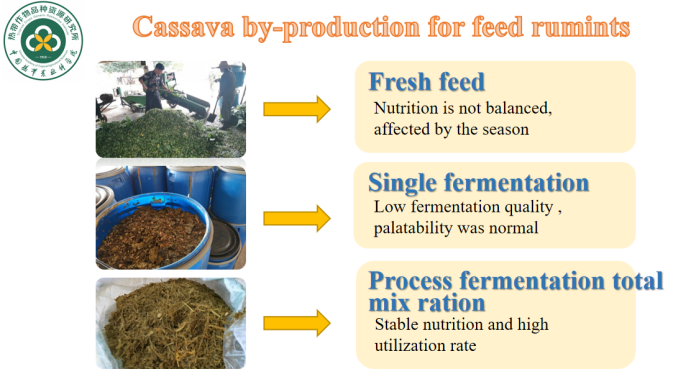
Three methods of cassava feed production
FTMR is a kind of diet that is processed, sealed, and stored after fully blending roughage (grass + hay + byproducts), concentrates, and essential minerals through mechanical mixing. It often involves feed additive technology, formulation techniques, packaging techniques, fermentation technologies, preservation technologies, and techniques to promote fermentation.
Ⅲ. Principles of FTMR Formula
The FTMR roughage is composed of fresh grass, hey, and cassava byproducts, which are used to provide feed, control moisture level (between 50% to 60%), and create new substances respectively.
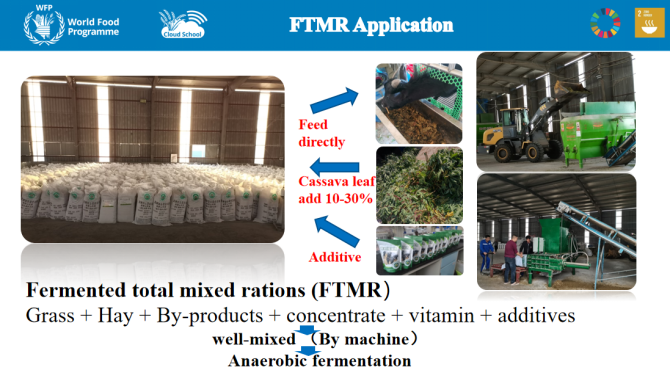
The FTMR application method
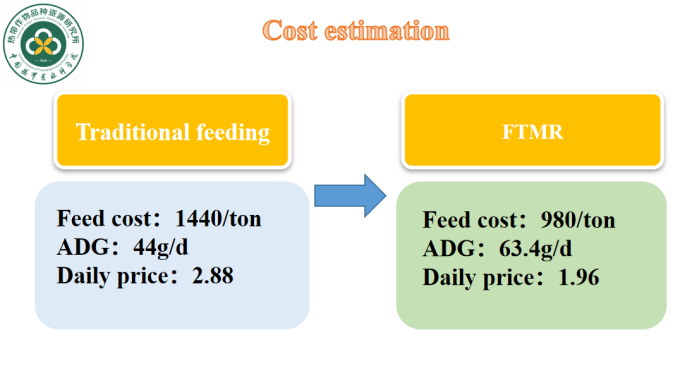
The cost estimation of FTMR is lower than traditional feed
There are four principles of raw materials selection for feed: (1) easy to get; (2) low in price; (3) rich in nutrients and high in yield; (4) easy to process (ferment).
Different proportions of materials and additives bring about variations in the quality of feeds, which hence affect growth development of ruminants. According to experiments, adding molasses significantly improves the fermentation quality of cassava stem and leaf in FTMR.
The common materials of FTMR are king grass, cassava stems and leaves, and pineapple peels.
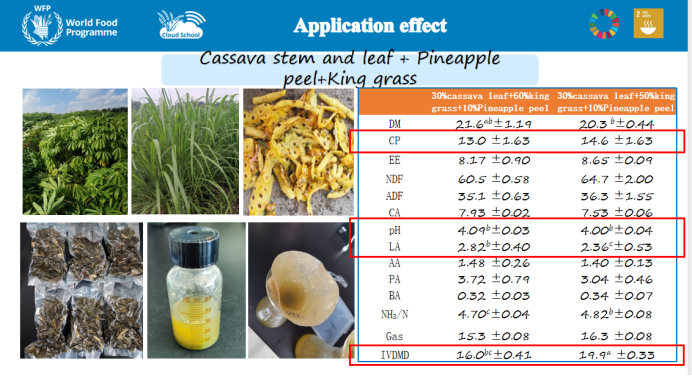
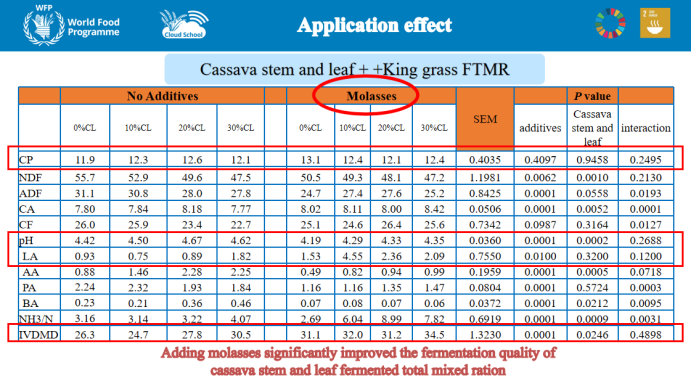
King grass is one of the common raw materials used for fermentation, additives like lactobacillus plantarum, cellulase, and sorbic acid can Improve the quality of king grass silage, increase rumen degradation rate, decrease pH, and so on.
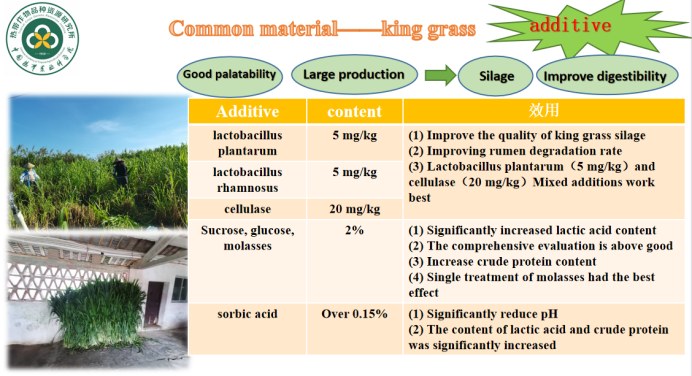
Effects of different additives
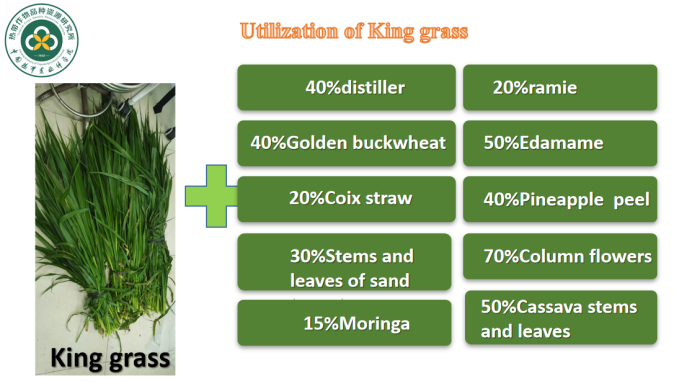
Common feed formula that contains king grass
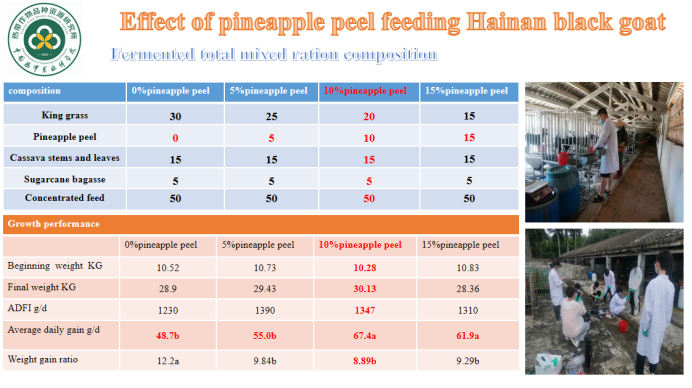
Effects of different materials application
Below are several principles of feed formulation:
(1) Nutritious: feed formula should have practical feeding effect and meet the needs of the animal for healthy and rapid growth.
(2) Safe: both for the safety of animals who eat the feeds and humans who consume products from these animals.
(3) Profitable: the purpose of feed formulation is to maximize the nutritional value of feed raw materials and achieve production goals at an optimized cost.
Concentrate feeds should not exceed 25%, and the appropriate ratio is 15-20%. It’s not suitable to make FTMR products for goats highly concentrated. A suitable ratio could increase animal growth rate. For example, a 50%:50% king grass to concentrate ratio increases the feed intake of Hainan black goats, good for fattening them.
Ⅳ. Potential Value of Photosynthetic Pigments in Grasses
Feeding green fodder that rich in chlorophyll increases phytanic acid in milk and meat, which adds value to such products. The chlorophyll-derived metabolite phytanic acid stimulates fatty acid oxidation and improves insulin resistance, contributing to reverse fatty liver and diabetes.
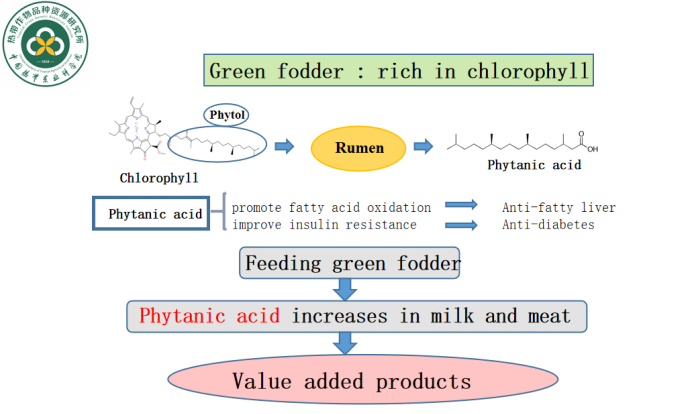
Photosynthetic pigments include β-carotene, Lutein, and Chlorophyll. They function as different types of antioxidants. Planting methods and harvest time can affect the content and ratio of photosynthetic pigments in grass.
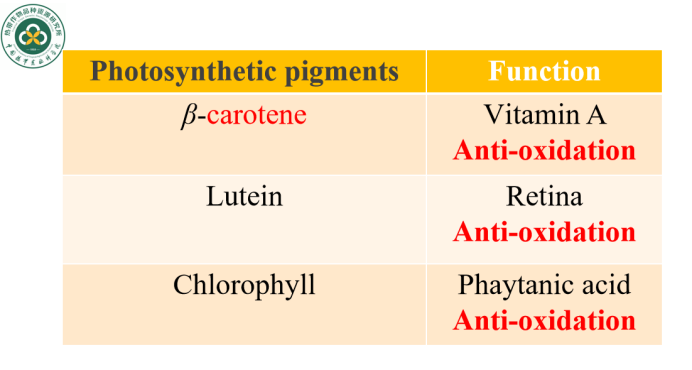
Three types of photosynthetic pigments
Ⅴ. Conclusions
Forage nutrients and functional substances can be preserved by fermentation. Increase droughage percentage is recommended when preparing FTMR. We should use the functional substances in roughage to process high-quality FTMR products for the production of high-grade livestock products. We need to specify a tropical forage production standard to make it highly nutritious and contain high functional substances to process high-quality FTMR.
References:
[1] Lv, Renlong. Formulation, production and application technology of fermented total mixed rations in tropical regions [PowerPoint slides]. Chinese Academy of Tropical Agricultural Sciences Tropical Crop Germplasm Research Institute.
[2] Lv, Renlong. Cassava Byproducts as feed for ruminants [PowerPoint slides]. Chinese Academy of Tropical Agricultural Sciences Tropical Crop Germplasm Research Institute.

For more information, please contact WFP China COE (wfpcn.coe@wfp.org)
Category
Technology to Ferment Cassava Byproducts as Ruminants Feed in Tropical Regions
Contributor
Technology to Ferment Cassava Byproducts as Ruminants Feed in Tropical Regions
Country
Technical Solution

